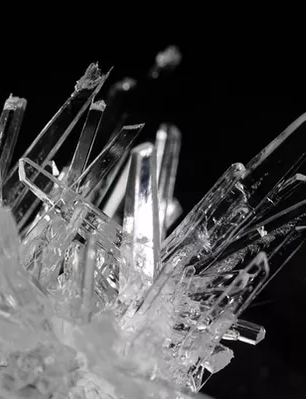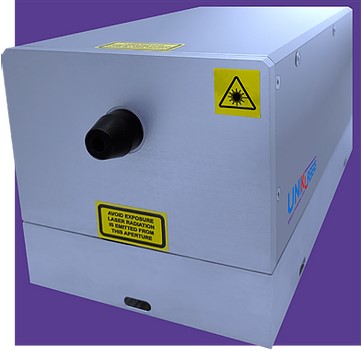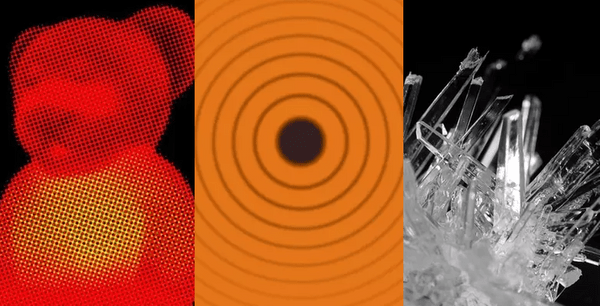Laser applications are becoming increasingly sophisticated as demand rises for more precise measurements, faster throughput, and better analysis. Some applications like Holography, Interferometry, and Raman Spectroscopy are rapidly growing in popularity along with the demand for better results. Because of this increased demand, companies are developing more advanced lasers with higher beam quality and other features meant to enhance the results of these popular applications. In this article, we will discuss Holography, Interferometry, and Raman Spectroscopy, and some of the important laser characteristics and features required to ensure these applications are successful and provide exceptional results.
Holography Applications: Anti-Counterfeiting, Digital Data Storage, and More

Holography is the process of utilizing interference patterns to record the difference in phase and amplitude of two light beams – a reference beam and an object incidence beam – encoding 3-dimensional information about the object onto a recording media, creating a 3D image. The resulting interference image is meaningless when viewed under a different light source, but when illuminated by the same light source as used for its creation, the original light path is recreated and the object can be seen as if it were still present. Apart from its frequent application in the arts, holography is also extensively used to prevent forgery in currency or documents, due to the difficulty in reproducing these holograms without the original light source. This requirement for highly accurate phase information is what mandates the use of lasers with excellent spatial and temporal coherence. Holography is also used in Digital Data Storage to create a 3D interference pattern over the entire volume of the storage material, rather than only on the surface, and greatly increases the information density as well as increasing data read and write speeds. Holography also underpins the growing applications of augmented and virtual reality devices, which require extremely high resolutions – combining digital holography with tomographic imaging.
Critical Laser Source Requirements Common to Holography Applications
| Narrow Linewidth – The narrow linewidth of the laser is a key characteristic that needs to be considered. Any phase difference between the two light paths will reduce the resolution available in the final image. This is not so critical during the reproduction of holographic plates and the coherence can be much shorter. | 
RPMC provides high power, single-frequency laser sources for Holography, with unrivaled wavelength stability, narrow linewidths, and long coherence lengths in the red region of the visible spectrum with our Solo 640 Series.
|
| High Power – As with standard photography, the creation of a holographic image requires an exposure time, which is dependent on the sensitivity of the recording media and the amount of light that is available. Higher power laser outputs offer shorter exposure times and larger fields of view. | |
| Wavelength Stability – For static objects in a vibration isolated environment, exposure time becomes less critical, and lower power lasers can be considered. Instead, wavelength stability becomes critical, as a slight drift or mode-hopping of the wavelength can cause distortion of the final image. | |
| Wavelength – The final consideration when looking at lasers for holography is the wavelength needed for the best results. Security labels would be ineffective if they were recorded in the IR region, outside the range of the human vision. Many modern holographic images are created using multiple wavelengths – red, green, and blue – in order to produce a colored final image. Holographic applications that do not rely on the human visual range can utilize wavelengths outside the visible range. Data storage, for instance, would indeed benefit from shorter UV wavelengths, leading to higher information density. |
Interferometry Applications: Distance/Surface Measurement, Gravitational Waves, and More

Interferometry refers to a wide range of techniques that rely on the superimposition of two coherent light paths, most often split from a single source, to form an interference pattern. This interference arises from path differences between the two beams, one reference light path, and one incident sample light path, resulting in measurable changes to the fringe pattern. This measurement technique can be used for a wide variety of different applications – from simple distance or surface measurements to structure and stress to the measurement of gravitational waves. A typical experimental setup is, in theory, quite simple. A highly stable, coherent laser is split in two, to create separate and identical beams. One is a reference arm with a fixed path, while the other forms the moving sample incident beam. Initially, the two beams are in phase, having been split from the same coherent source. If the two path lengths are the same, they will still be in phase when they reach the detector. However, slight deviations in the path of the sample beam will change its phase relative to the reference beam and so will produce associated deviations in the interference pattern. It is these deviations in the interference pattern that are the measurable output.
Critical Laser Source Requirements Common to Interferometry Applications
| Spectral Stability – Firstly, the source requires high spectral stability to ensure that pattern changes are caused by the sample, rather than laser effects. Longer coherence lengths, and therefore narrower linewidths, will partly determine the resolution of the measurement, along with consideration of the wavelength used. | 
RPMC provides single-frequency laser sources for Interferometry, with unrivaled wavelength stability, narrow linewidths, and long coherence lengths within a small footprint in the UV and red regimes with our 349 NX UV Series, Solo 640 Series. |
| Pointing Stability – High beam pointing stability ensures a consistent measurement on the selected sample position, whereas high beam quality reduces the possible complexities in analyzing the measurement result. | |
| Power Level – Finally it is important to consider the available power level in comparison to the sample size, as higher power enables the imaging of larger areas. | |
.gif) For some more in-depth reading on Interferometry and the benefits these single-frequency, CW DPSS Lasers provide, check out this other blog: For some more in-depth reading on Interferometry and the benefits these single-frequency, CW DPSS Lasers provide, check out this other blog:
“Stable, Narrow Linewidth, CW DPSS Lasers for Precision Interferometry“ |
|
Raman Spectroscopy / Microscopy: Biology, Pharmaceuticals, Semiconductors, and More

Raman spectroscopy is an analytical technique used to identify and quantify the chemical composition and structure of a sample by the analysis of scattered light. When a laser is incident on a sample, most of the photons will be scattered elastically and will not be subject to any energy change, known as Rayleigh Scattering. Raman scattering events are significantly more infrequent, only around 1 in a million incident photons, but the consideration of these inelastically scattered photons, where a change in frequency (or Stokes shift) can be observed, allows a range of information about the sample to be determined. The energy for this wavelength shift comes from a change in the energy state of a molecular bond or bonds. This is distinct from an interaction where the photon is absorbed by an atom and then re-emitted at a different wavelength, which is the domain of fluorescence spectroscopy. The wavelength shift in the Raman scattered light corresponds directly to the current energy states of the molecular bonds in the sample so, as these are influenced not just by the atoms involved in those bonds but also by the total crystal structure and the strain the system is under, it is possible to interpret useful information from the Raman spectrum that can be difficult to obtain by other means. First demonstrated by C. V. Raman in 1928, this weak Raman effect has been historically difficult to discern. However, significant advances in laser sources, detectors, and optical techniques mean that Raman Spectroscopy and Microscopy are now widely used over a disparate range of applications; including biology, pharmaceuticals, semiconductors, forensics, security, and the analysis of art and museum artifacts.
Critical Laser Source Requirements Common to Raman Applications
| Wavelength – The strength of the Raman signal is directly dependent on the wavelength of the laser source, where lower wavelengths will produce stronger Raman signals, as well as allowing for higher spatial resolution. It is important, however, to balance this observation with the occurrence of background fluorescence, prevalent in many materials throughout the UV-visible spectrum, and the possibility of sample damage at high energy. These effects most often cause a compromise in the wavelength of the source used, where longer wavelengths, such as 532 nm, 785 nm, and 1064 nm, in combination with highly sensitive detectors, allow for the widest range of samples to be measured. | 
RPMC provides single-frequency laser sources for Raman Spectroscopy, with unrivaled wavelength stability, narrow linewidths, and long coherence lengths in the red and UV areas of the visible spectrum with our Solo 640 Series and 349 NX UV Series; to complement our Solo 1064 Series, for the elimination of background fluorescence and the analyses of biological samples. |
| Spectral Linewidth & Purity – The spectral linewidth of the laser source should also be considered, as it will limit the possible resolution of the Raman measurement as well as the minimum energy change that can be determined. It is important for the laser selected to have a linewidth below the overall resolution of the Raman spectrometer, on the order of picometers. For high-resolution spectroscopy, this is critical and requires linewidths below 1 MHz. High spectral purity will also increase the signal-to-noise ratio from the measurement. | |
| Beam Quality – The beam quality is related to the possible spatial resolution. Here, single transverse mode beams (TEM00) are vital for confocal Raman Spectroscopy, in particular, allowing for high spatial control in all three axes, improving spatial resolution, and decreasing background effects. |
Talk to a knowledgeable Product Manager today by Contacting Us here, or by emailing us at info@rpmcdev.maxdroplet4.maxburst.dev!

